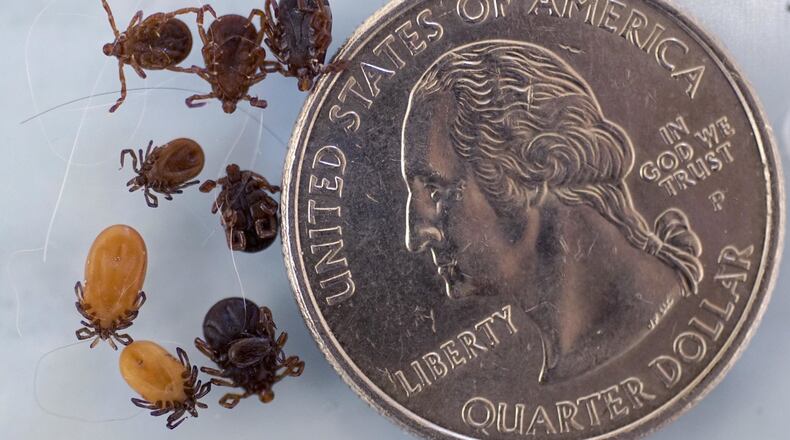Your child may run into ticks near the edges of woods and forests. They thrive in shady, moist ground cover or areas with tall grass, brush, shrubs and low tree branches. Lawns and gardens can also harbor ticks, as well as areas around old stone walls.
Avoiding ticks
The best ways to avoid ticks are to cover up and use repellent. Consider closed-toe shoes, long-sleeved shirts, long pants and hats when your child is in an area that may harbor ticks. You can use a repellent with DEET, but be sure to follow the directions and don’t get it near a child’s eyes, mouth or nose. Avoid sitting on the ground when possible.
“It is important to inspect your kids after they have been outside playing,” says Bethany. “Consider making a nightly routine. Check in the ears, the groin area, behind the knees and under the arms — sneaky places ticks like to hide.”
Removing ticks
If you find a tick has bitten your child, don’t panic. The risk of developing Lyme disease after being bitten by a tick is only about 1-3 percent. On top of that, it takes at least a day or two for the tick to transmit the bacteria that cause Lyme disease.
Use tweezers to grasp the tick firmly at its head or mouth, next to the skin. Pull firmly and steadily on the tick until it lets go. Place the tick in a plastic bag, in case you need to show it to the doctor. Swab the area with alcohol. Don’t use any other method — like a lit match or petroleum jelly — these can cause the tick to burrow deeper.
What does Lyme disease look like?
Common symptoms of Lyme disease include a circular, ring-type rash around the bite site – like a bulls-eye. Other symptoms include flu-like symptoms, joint pain or swelling and sometimes even facial paralysis.
If you have any concerns, even if you never saw a tick, contact your child’s doctor. Lyme disease is usually treated with a 2- to 4-week course of antibiotics.
This look at a children’s health or safety issue comes from Dayton Children’s Hospital. Email: newsroom@childrensdayton.org.
About the Author
